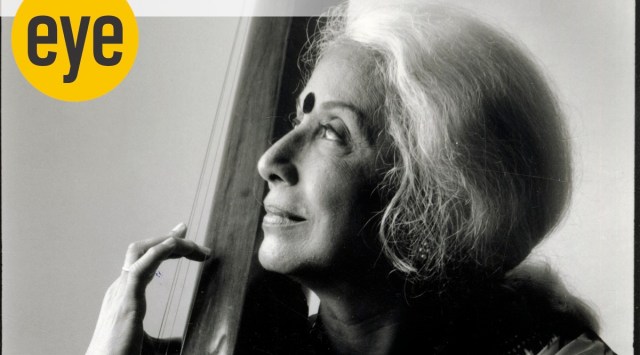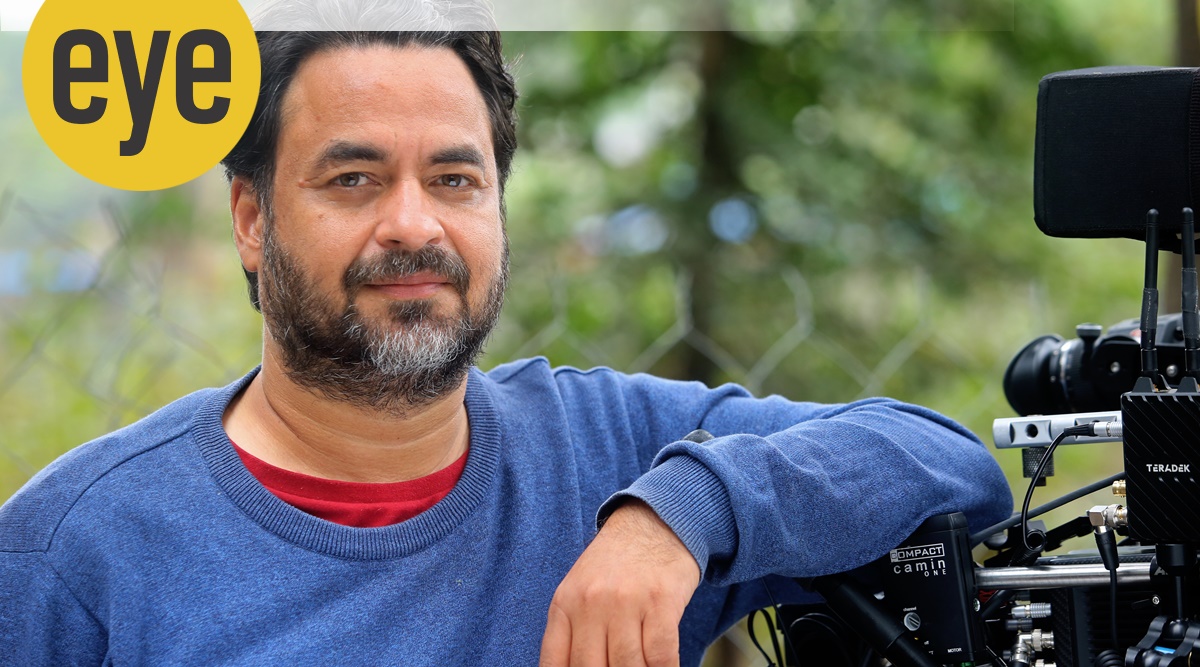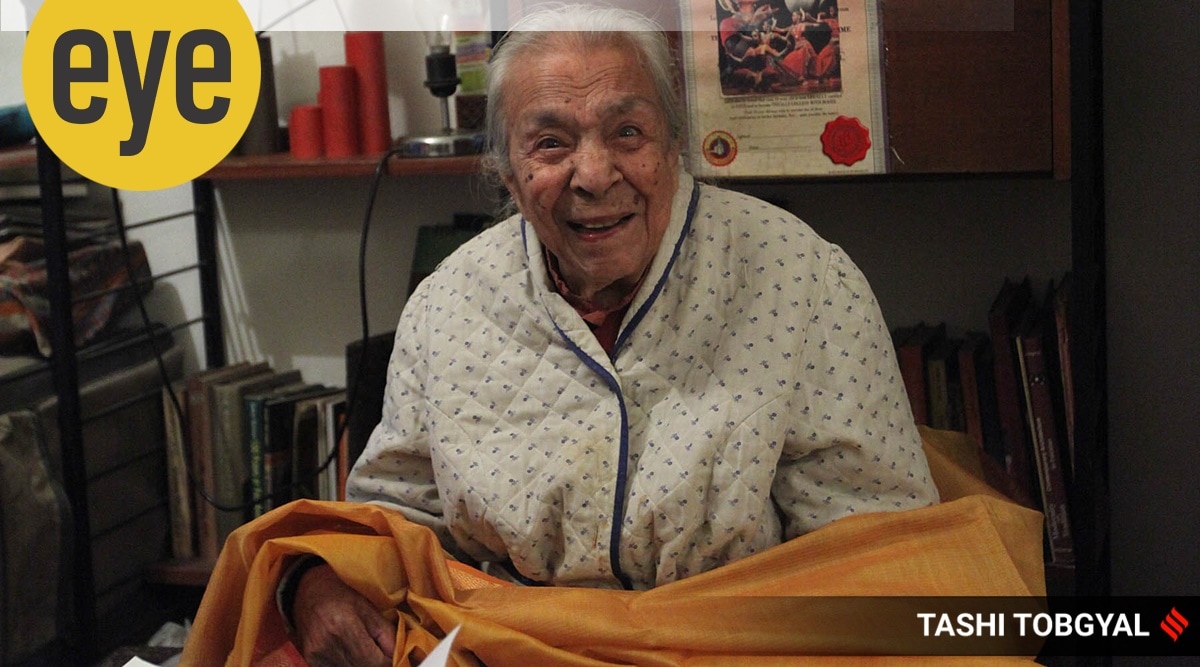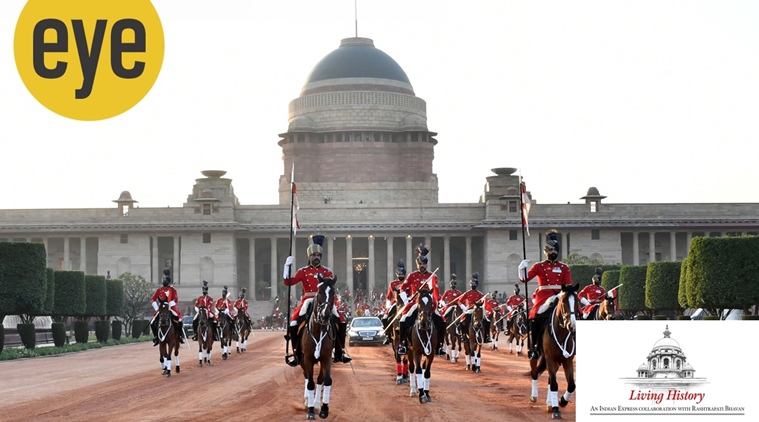Latest Comment
Post Comment
Read Comments
 Prabha Atre questioned traditional methods of thought and expression in Indian classical music, in the way it’s taught to young adults and the adherence to singing a raga at a particular time (photo credit: Express Archives)
Prabha Atre questioned traditional methods of thought and expression in Indian classical music, in the way it’s taught to young adults and the adherence to singing a raga at a particular time (photo credit: Express Archives)‘Art will change with time, so the shastra can’t stay behind’: Prabha Atre
Over the last 15 years, Hindustani classical vocalist Prabha Atre has headlined the Sawai Gandharva Bhimsen Mahotsav — a significant event in the country’s cultural calendar. Initiated by Pt Bhimsen Joshi in memory of his guru, the annual Pune festival draws large crowds, who travel from far and wide, some even sleeping outside the ticket counter for festival passes in the morning. Until he retired in 2006, Joshi would close the festival. He then chose Atre, who has carried it forward even after his passing in 2011.
‘The novel truly represents the farmer class’: Gurvinder Singh
 Filmmaker Gurvinder Singh.
Filmmaker Gurvinder Singh.
Your latest Punjabi film Adh Chanani Raat (Crescent Night), which premiered at the International Film Festival Rotterdam, is based on Gurdial Singh’s novel of the same name. What made you revisit his writing?
After Chauthi Koot (2015), based on two short stories by Punjabi writer Waryam Singh Sandhu, I thought of working with another story from Punjabi literature. I considered some other literary works before going back to Gurdial Singh, whose novel I’d adapted for my first feature Anhey Ghorhey Da Daan (2011). Adh Chanani Raat is different from both Anhey… and Chauthi Koot. Unlike them, where the story unfolds in a sociopolitical backdrop, this film is more about one person Modan (Jatinder Mauhar) and his family. It’s about how the landowning class has not changed.
In an outstanding biography, Zohra: A Biography in Four Acts, Ritu Menon captures the indomitable spirit and perseverance of Zohra Segal
 Actor Zohra Segal at her residence in New Delhi in 2014. (Express photo by Tashi Tobgyal)
Actor Zohra Segal at her residence in New Delhi in 2014. (Express photo by Tashi Tobgyal)
Autobiographies or memoirs, particularly of artistes, I have always found more fascinating than biographies. For one, they record a kind of oral history that is valuable because it gives a more vivid picture of their life and brings alive the multilayered context of their times. Second, the way memories are mediated reflects another aspect of the personality of each writer in terms of what they want projected and what they choose to hide. Third, being in first person, it captures the nuances of expressions, language, cultural symbols, and, therefore, the whole personality in a way that would be difficult for a biography to evoke. However, I found an unusual exception in Ritu Menon’s biography of Zohra Segal — Zohra! A Biography in Four Acts.
What We Lack: Meeta and Rajivlochan’s book Making India Great Again chooses action over nostalgia
 Making India Great Again: Learning From Our History by Meeta and Rajivlochan, published by Manohar, 299 pages, Rs 320. (Source: Amazon.in)
Making India Great Again: Learning From Our History by Meeta and Rajivlochan, published by Manohar, 299 pages, Rs 320. (Source: Amazon.in)
Making India Great Again as a title does suggest that the work aims to give prescriptions on how a long past golden age can be reconfigured. That, however, is not the intention of the Rajivlochans. Their aim is to closely scrutinise some aspects of our history and extract from it a list of deficiencies as action points to be addressed and fixed as India looks to the future. Finding “lessons” from history is, of course, treading on a slippery path but within the methodological limits posed by this caveat, their book is a thought-provoking effort to critically engage with our history with a view to our present predicaments. The latter, in particular, can be summarised as simply that while we have made some good progress and have substantial achievements to our credit, our performance remains under potential and others have done better.
Rochona Majumdar’s book on Art Cinema is a compelling chapter on India’s modern history recorded on screen
 By revisiting the trilogies of the masters, Ritwik Ghatak, Satyajit Ray, Mrinal Sen, Majumdar exhorts the pivotal role of Indian art cinema, as a tool of history, that looks at the past (India’s march from an independent colony to a developing nation and the many could-have-been futures) to survive the present.
By revisiting the trilogies of the masters, Ritwik Ghatak, Satyajit Ray, Mrinal Sen, Majumdar exhorts the pivotal role of Indian art cinema, as a tool of history, that looks at the past (India’s march from an independent colony to a developing nation and the many could-have-been futures) to survive the present.
A rock must land on our heads if one dismisses ‘Art Cinema and India’s Forgotten Futures: Film and History in the Postcolony’ as yet another instance of a sentimental Bengali delving into that favourite Bengali pastime: discussing the past (an escape from the dystopian present — sociopolitical, cinematic) and the actors of history (not Tagore, Vivekananda or Netaji but the cinematic triumvirate), that enthuse as much as divide this ethnolinguistic group. Author Rochona Majumdar fills a gaping lacuna. While Bollywood/Hindi commercial films have been the poster child of popular and scholarly writing, Indian art cinema, like everything else to do with the form (state support, funding, exhibition), has often received the stepchild treatment.
When a part of the chhajja at the Rashtrapati Bhavan nearly collapsed
 Woven into Edwin Lutyens’s Edwardian Baroque opus are numerous Indian motifs and designs – lotuses and elephants, chhatris and chhajjas. (Source: Rashtrapati Bhavan Archives)
Woven into Edwin Lutyens’s Edwardian Baroque opus are numerous Indian motifs and designs – lotuses and elephants, chhatris and chhajjas. (Source: Rashtrapati Bhavan Archives)
As the Republic Day celebrations culminated with the Beating Retreat ceremony on January 29, the Rashtrapati Bhavan was illuminated again. Along with North Block and South Block, on either side, a magical screen of myriad hues created a fantastic panorama. Adjectives like “majestic” and “monumental” can do no justice to the grandeur of the building that is at the heart of the Indian Republic.
To All the Men Who Never Loved Us: Shrayana Bhattacharya’s new book delves into the cult of Shah Rukh Khan and how it shaped the aspirations of Indian women
 The book written by economist Shrayana Bhattacharya and published by Harper Collins India looks at how fandom for Shah Rukh Khan shapes the Indian economy and lives of Indian women.
The book written by economist Shrayana Bhattacharya and published by Harper Collins India looks at how fandom for Shah Rukh Khan shapes the Indian economy and lives of Indian women.
Very rarely does a book appear as if it was written just for you, as if every word and line had been carefully crafted to help you make sense of your life. Shrayana Bhattacharya’s book, ‘Desperately Seeking Shah Rukh’ is one of them. The title might suggest that the book is about Shah Rukh and how a generation of women are hopelessly looking out for him. But going through the detailed interviews carried out by Bhattacharya of female fans of Shah Rukh, spread out across class, caste, professions and religion, one realises that the actor is, in fact, a myth, a symbol of a particular kind of romance these women are seeking. Despite the multifaceted backgrounds, a few things are common among all her interviewees. One, of course, that they love Shah Rukh and everything he represents, two, that they grew up in a post-liberalised India, and three, that they desire a life of economic independence in which men are desired for companionship and not for financial security.
How Mother Nature gave wings to her fancy by devising ‘flight’
 Big broad wings for soaring. (Source: Ranjit Lal)
Big broad wings for soaring. (Source: Ranjit Lal)
Little children — especially in the “developed” world are spun yarns every Christmas about Santa’s massive toy workshop in the North Pole where toy orders are taken from kids around the world, elves get busy making them and Santa personally distributes them to delighted children everywhere (only if they’ve been good). But kids soon cotton on to the impossibility of this endeavour, so when the scales fall, it would be nice to replace that story with another — equally miraculous — but true.

